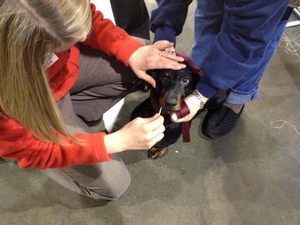On April 30th, you will be able to order genetic testing for your dogs from Paw Print GeneticsTM. Before we could open our doors for clinical testing, we had a lot of work to do, work that involved my entire family and our extraordinary staff. We had to build an entire laboratory from the ground up. Part of that process was validating our tests, which, as I’ll explain, is an important and necessary step – and one that involved many of you.
After more than 20 years of working in human genetic diagnostic testing, I decided to use these skills to improve genetic testing for inherited canine diseases. We are so grateful for the support of the community of dog owners and breeders who participated in our validation studies from December 2012 through March 2013. As unknowns in this industry, we appreciate your trust that we were doing the right thing with your dog’s DNA.
We set up our laboratory, designed our tests and conducted our validation as if Paw Print Genetics were a human diagnostic laboratory. This means that we have all of the validation documentation that would be required if we were regulated by ...







